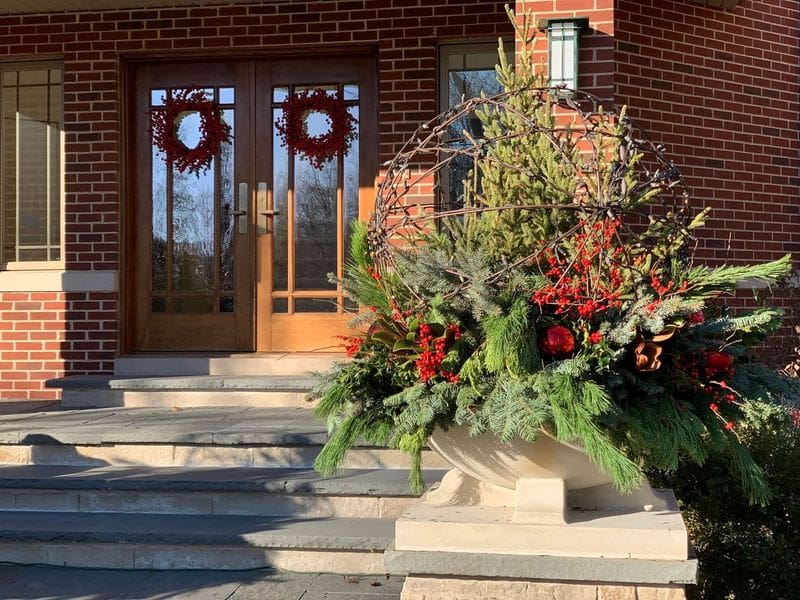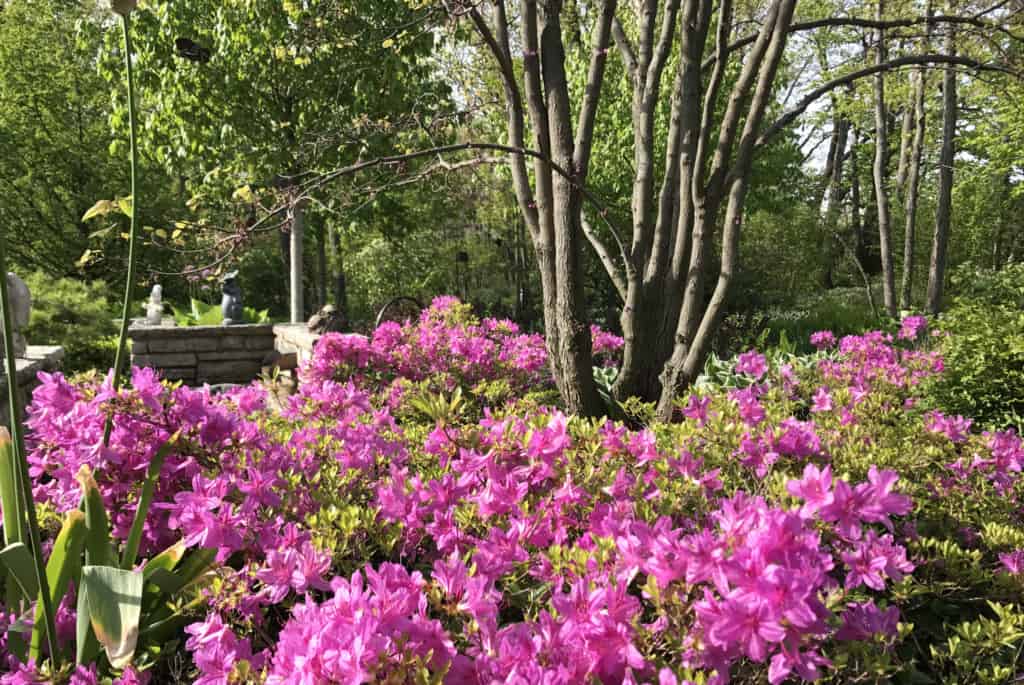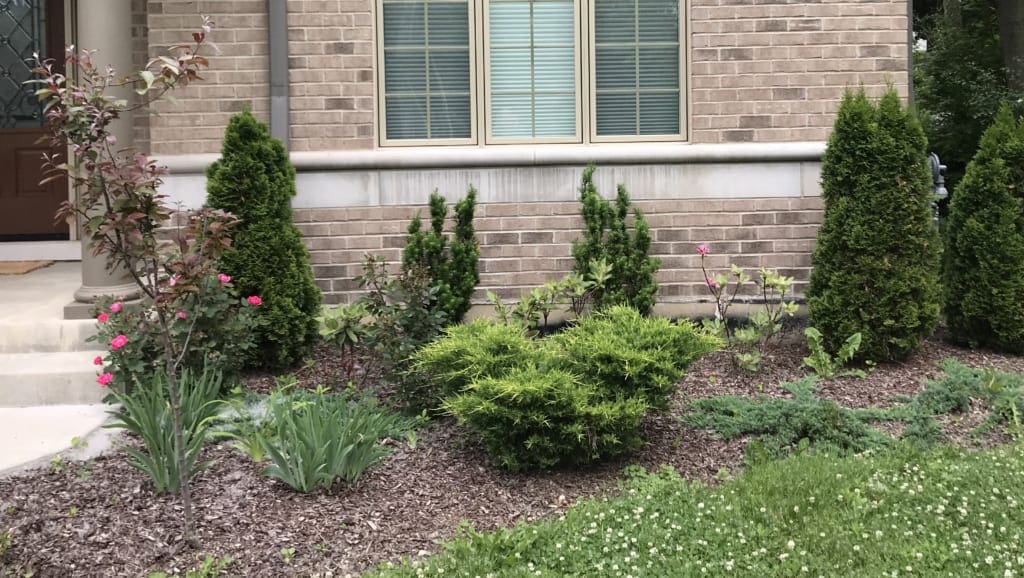One of our clients came to us after recently purchasing their home and wanted to add to their existing landscape. It was clear that the minimum landscape requirement was installed here in order to get the permit approved. Let’s look at each photo below and find ways to improve these spaces. All the plant material was grouped together by type and transplanted to more appropriate locations. Transplanting existing plant material is a great way to stay under budget instead of starting from scratch.

These pyramidal evergreens, (Arborvitae) are planted too close to the house. If left alone, they will need to be pruned back every year in order not to become a maintenance issue. Try to keep in mind the plants mature size before planting anything. You want each plant to grow gracefully in their new location vs. pruning back year after year and changing its natural habit. Between the arborvitae, hick yews were planted. As you can see the tops of them are very wild and have not been trimmed back. Hick yews are a perfect plant choice when trying to hide or screen something unattractive. In this case, we transplanted them all around the AC units to make a ‘living fence’.

The pink flowering shrubs (rhododendron) are remarkable plants for their eye-catching flowers in the spring but the most appropriate setting for them is in a wooded, natural area. They thrive in well drained, hummus rich, and acidic soil. Here we grouped them together and moved them to the perimeter of the property under a few tree canopies. Grouping plants together saves you in the long run with not weeding as much and it also allows the plants to grow into each other to create stunning color masses that will look great from near and afar.
Here’s a perfect example of a natural setting of Azalea’s around a Serviceberry.

Another shot of this landscape. Makes you want to sit down and grab a book or magazine next to this Cherub!


In this area let’s discuss the low growing evergreens (Juniper). There are two different kinds here next to a variety of other plants that are just scattered randomly thought out this bed. Junipers are very useful in a landscape when they are retaining soil on a sloped area. They are not the most attractive plant so I would not plant them near the front door or walkway. We transplanted all of them to the back around the existing patio where there was an existing slope. A few other plants that are good for sloped areas are: Gro-low Sumac, Cutleaf Stephanandra, Summersweet, Daylilies, Coneflowers, and Russian Sage.
Now it’s time to look around your landscape. Are there areas where you can fill in empty spaces with more quantity of the same plant to reduce weeding? Is there a tree or large shrub that is planted too close to your house or fence? If there are some problem areas that you need guidance with, give us a call. We would be happy to discuss them with you.










